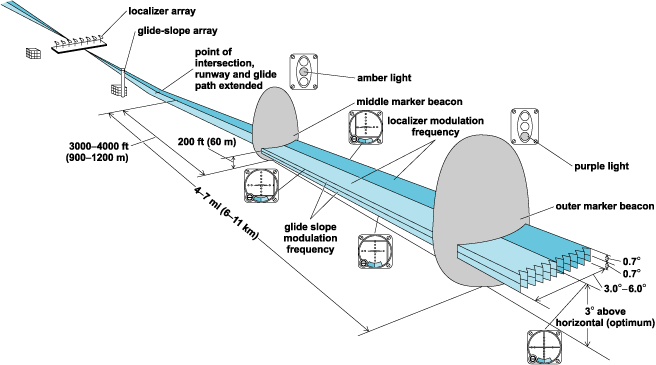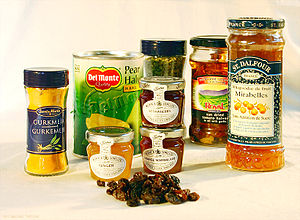All food products except for the one growing in your kitchen garden has food preservatives in them. Every manufacturer adds food preservative to the food during processing. The purpose is generally to avoid spoilage during the transportation time.
Food is so important for the survival, so food preservation is one of the oldest technologies used by human beings to avoid its spoilage. Different ways and means have been found and improved for the purpose.
Boiling, freezing & refrigeration, pasteurizing, dehydrating, pickling are the traditional few. Sugar and salt are also often used as preservatives food.
Nuclear radiation is also being used now as food preservatives. Modified packaging techniques like vacuum packing and hypobaric packing also work as food preservatives.
Food Preservation is basically done for three reasons
- To preserve the natural characteristics of food
- To preserve the appearance of food
- To increase the shelf value of food for storage.
Natural Food Preservatives
In the category of natural food preservatives comes the salt, sugar, alcohol, vinegar etc. These are the traditional preservatives in food that are also used at home while making pickles, jams and juices etc. Also the freezing, boiling, smoking, salting are considered to be the natural ways of preserving food. Coffee powder and soup are dehydrated and freeze-dried for preservation. In this section the citrus food preservatives like citrus acid and ascorbic acid work on enzymes and disrupt their metabolism leading to the preservation.
Sugar and salt are the earliest natural food preservatives that very efficiently drops the growth of bacteria in food. To preserve meat and fish, salt is still used as a natural food preservative.
Chemical Food Preservatives
Chemical food preservatives are also being used for quite some time now. They seem to be the best and the most effective for a longer shelf life and are generally fool proof for the preservation purpose. Examples of chemical food preservatives are:
- Benzoates (such as sodium benzoate, benzoic acid)
- Nitrites (such as sodium nitrite)
- Sulphites (such as sulphur dioxide)
- Sorbates (such as sodium sorbate, potassium sorbate
Antioxidants are also the chemical food preservatives that act as free radical scavengers. In this category of preservatives in food comes the vitamin C, BHA (butylated hydroxyanisole), bacterial growth inhibitors like sodium nitrite, sulfur dioxide and benzoic acid.
Then there is ethanol that is a one of the chemical preservatives in food, wine and food stored in brandy. Unlike natural food preservatives some of the chemical food preservatives are harmful. Sulfur dioxide and nitrites are the examples. Sulfur dioxide causes irritation in bronchial tubes and nitrites are carcinogenic.
Artificial Preservatives
Artificial preservatives are the chemical substances that stops of delayed the growth of bacteria, spoilage and its discoloration. These artificial preservatives can be added to the food or sprayed on the food.
Types of Artificial Preservatives Food
- Antimicrobial agents
- Antioxidants
- Chelating agent
In antimicrobial comes the Benzoates, Sodium benzoate, Sorbates and Nitrites.
Antioxidants include the Sulfites, Vitamin E, Vitamin C and Butylated hydroxytoluene (BHT)
Chelating agent has the Disodium ethylenediaminetetraacetic acid (EDTA), Polyphosphates and Citric acid
Harmful Food Preservatives
Although preservatives food additives are used to keep the food fresh and to stop the bacterial growth. But still there are certain preservatives in food that are harmful if taken in more than the prescribed limits.
Certain harmful food preservatives are
Benzoates
This group of chemical food preservative has been banned in Russia because of its role in triggering
allergies, asthma and skin rashes. It is also considered to cause the brain damage. This food preservative is used in fruit juices, tea, coffee etc.
Butylates
This chemical food preservative is expected to cause high blood pressure and cholestrol level. This can affect the kidney and live function. It is found in butter, vegetable oils and margarine.
BHA (butylated hydroxyanisole)
BHA is expected to cause the live diseases and
cancer
. This food preservative is used to preserve the fresh pork and pork sausages, potato chips, instant teas, cake mixes and many more.
Caramel
Caramel is the coloring agent that causes the vitamin B6 deficiencies, genetic effects and cancer. It is found in candies, bread, brown colored food and frozen pizza.
In addition to this there are many other harmful food preservatives. These are Bromates, Caffeine, Carrageenan, Chlorines, Coal Tar AZO Dies, Gallates, Glutamates, Mono- and Di-glycerides, Nitrates/Nitrites, Saccharin, Sodium Erythrobate, Sulphites and Tannin
Preservatives Food Additives
All of these chemicals act as either antimicrobials or antioxidants or both. They either inhibit the activity of or kill the bacteria, molds, insects and other microorganisms. Antimicrobials, prevent the growth of molds, yeasts and bacteria and antioxidants keep foods from becoming rancid or developing black spots. They suppress the reaction when foods comes in contact with oxygen, heat, and some metals. They also prevent the loss of some essential amino acids some
vitamins
.
Some common preservatives and their primary activity
| Chemical Affected |
| Organism(s) |
| Action |
|
| Use in Foods |
| Sulfites |
| Insects & Microorganisms |
| Antioxidant |
|
| Dried Fruits, Wine, Juice |
| Sodium Nitrite |
| Clostridia |
| Antimicrobial |
|
| Cured Meats |
| Propionic Acid |
| Molds |
| Antimicrobial |
|
| Bread, Cakes, Cheeses |
| Sorbic Acid |
| Molds |
| Antimicrobial |
|
| Cheeses, Cakes, Salad Dressing |
| Benzoic Acid |
| Yeasts & Molds |
| Antimicrobial |
|
| Soft Drinks, Ketchup, Salad Dressings |
There are other antioxidants like Sodium Erythorbate, Erythorbic Acid, Sodium Diacetate, Sodium Succinate, Grape Seed Extract, Pine Bark Extract, Apple Extract Tea Proplyphenols, Succinic Acid and Ascorbic Acid and food preservatives like Parabens and Sodium Dehydro Acetate used frequently for preservation.











![Reblog this post [with Zemanta]](http://img.zemanta.com/reblog_e.png?x-id=a0fe6e21-f42f-46f4-888a-19d208778832)

![Reblog this post [with Zemanta]](http://img.zemanta.com/reblog_e.png?x-id=1c0a2ba1-f2b9-42f3-ab54-316f59eae450)


![Reblog this post [with Zemanta]](http://img.zemanta.com/reblog_e.png?x-id=bb9c18a4-855c-4017-acc9-c942c6fa1a76)

![Reblog this post [with Zemanta]](http://img.zemanta.com/reblog_e.png?x-id=1edc0319-54e8-428c-a2ef-eee0b54a88f1)

![Reblog this post [with Zemanta]](http://img.zemanta.com/reblog_e.png?x-id=81bd650b-508d-435f-b7ba-ad31e71c6b55)


![Reblog this post [with Zemanta]](http://img.zemanta.com/reblog_e.png?x-id=9fe6888c-3bbe-4be4-8bb9-b968ab909833)